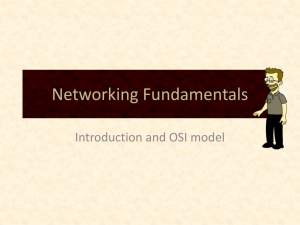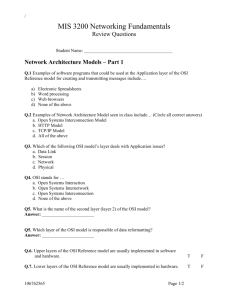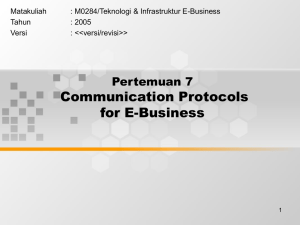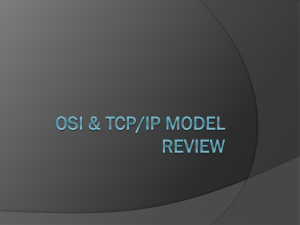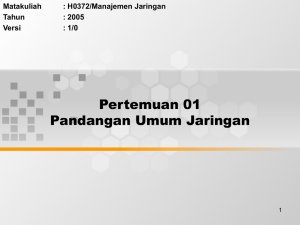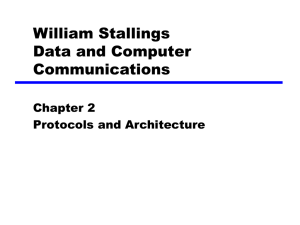Why Internetworking? - California State University, Long Beach
advertisement
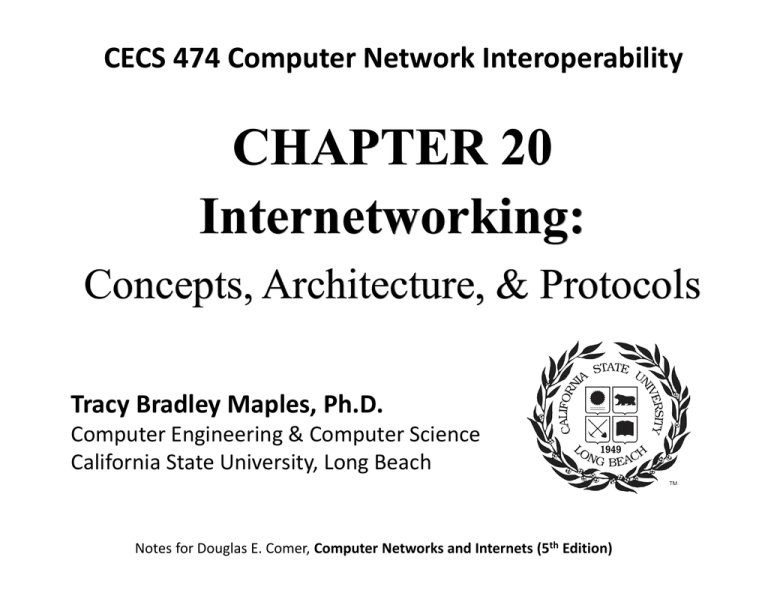
CECS 474 Computer Network Interoperability CHAPTER 20 Internetworking: Concepts, Architecture, & Protocols Tracy Bradley Maples, Ph.D. Computer Engineering & Computer Science California State University, Long Beach Notes for Douglas E. Comer, Computer Networks and Internets (5th Edition) Why Internetworking? "One of the most utterly scintillating notions presented in the text is that there is no such thing as an internet. Universal service exists by deftly combining software and hardware into a virtual network system, where the communication system is an abstraction." Dr. Jennifer Seitzer University of Dayton LANs • Low cost • Limited distance WANs • High cost • Unlimited distance Thus, no single networking technology is best for all needs. Universal Service • • • • • A fundamental concept in networking Pioneered by the telephone system Allows an arbitrary pair of computers to communicate Highly desirable Difficult in a heterogeneous world Heterogeneity Incompatibilities among networks exist. There are different: • Electrical properties • Signaling and data encoding • Packet formats • Physical Addresses Ultimately: Although universal service is highly desirable, incompatibilities among network hardware and physical addressing prevent an organization from building a bridged network that includes arbitrary technologies. --Comer Solution: Build an Internetwork • Begin with heterogeneous network technologies • Connect the physical networks • Create software to make the resulting system appear homogeneous The result is called an internetwork or internet. Connecting Heterogeneous Networks Special purpose computer systems are used to connect heterogeneous networks: • Dedicated • Work with LAN or WAN technologies • Known as an -- Internet router -- Internet gateway An Internet Router • The cloud denotes an arbitrary network technology • One interface per network is needed Main Concept: A router can interconnect networks that use different technologies, including different media and media access techniques, physical addressing schemes, or frame formats. --Comer Internet Architecture • Use multiple: -- Networks -- Routers interconnecting networks • The Host computer connects to a network • A single router has limited -- CPU power and memory -- I/O capability Goal of Internetworking Create a communication system that is: • Seamless • Uniform • General-purpose • Universal • Hides heterogeneity from the user The Internet Concept Hiding Heterogeneity To create a "virtual" network: Invent -- An addressing scheme -- A naming scheme • Implement with the scheme with protocol software Note: The protocol software is needed on both hosts and routers. The Internet Protocols • Known as TCP/IP • Many protocols comprise the suite • Designed to work together • Divided into five conceptual layers TCP/IP Layering Note: This TCP/IP layering is an actual implementation of protocols, unlike the ISO model. TCP/IP Layers Layer 5: Application Layer • Everything else (i.e., how one application uses the Internet) • Similar to OSI Layer 6 and 7 Layer 4: Transport Layer • Specifies how to provide reliable transfer from one application on one computer to an application on another • Similar to OSI Layer 4 Layer 3: Internet Layer • Format of packets • Mechanisms for forwarding packets • Not in the OSI Model Layer 2: Network Interface Layer • MAC frame format • MAC addressing • Interface between computer and the network (i.e., the NIC) • Similar to OSI Layer 2 Layer 1: Physical Layer • Basic network hardware • Similar to OSI Layer 1


